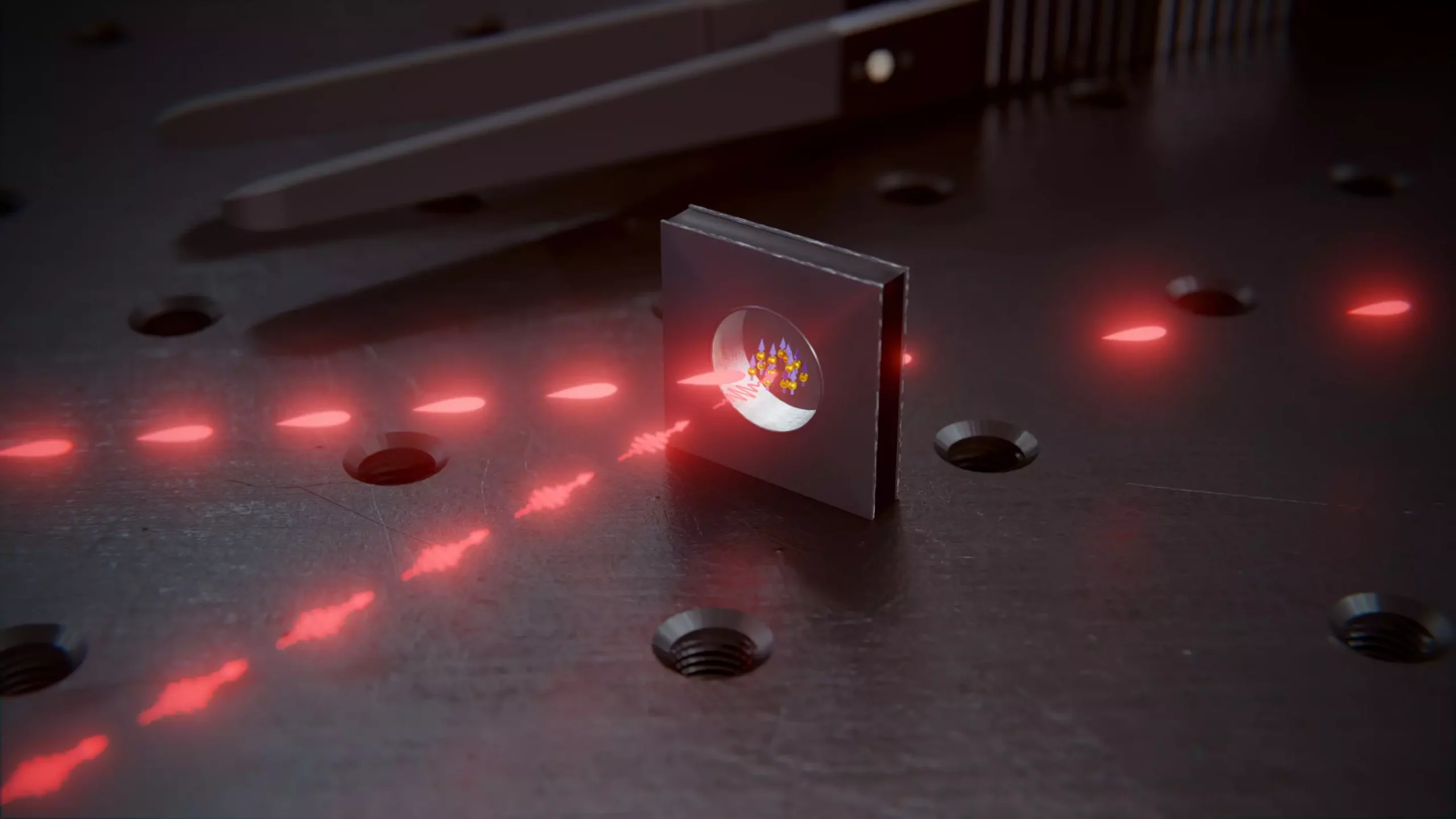Quantum technologies have the potential to revolutionize the way we communicate and process information. To enable the tap-proof transmission of messages using quantum cryptography and connect quantum computers, quantum networks require memory elements where information can be temporarily stored and routed. Researchers at the University of Basel have made a significant breakthrough in this field by developing a miniature quantum memory for photons. This innovation has the potential to be mass-produced and paves the way for the future of quantum networks.
Quantum memory plays a crucial role in quantum networks. Like conventional memories, it allows information to be stored and retrieved as needed. However, quantum memory deals with the fragile nature of quantum states and requires precise storage and retrieval of quantum information. Researchers at the University of Basel, led by Professor Philipp Treutlein, have successfully developed a quantum memory element using atoms in a tiny glass cell.
The previous quantum memory element developed by the researchers in Basel was handmade and several centimeters in size. To make the quantum memory suitable for practical applications and mass production, it needed to be significantly smaller. The researchers achieved this by using a cell that measured only a few millimeters, obtained from the mass production of atomic clocks. However, this presented new challenges in ensuring a sufficient number of rubidium atoms for quantum storage.
To overcome the challenge of limited space in the miniature cell, the researchers had to develop innovative solutions. They heated up the cell to 100 degrees Celsius to increase the vapor pressure, allowing for a sufficient number of rubidium atoms. Additionally, the atoms were exposed to a magnetic field 10,000 times stronger than Earth’s magnetic field, shifting the atomic energy levels in a way that facilitated the quantum storage of photons. An additional laser beam was used to enable the storage of photons for approximately 100 nanoseconds.
The miniaturized quantum memory developed by the researchers at the University of Basel has significant potential for mass production. Around 1,000 copies of the miniature quantum memory can be produced in parallel on a single wafer. This breakthrough opens up possibilities for the large-scale production of quantum memories, which is vital for the widespread adoption of quantum technologies.
While the current experiment demonstrated storage using strongly attenuated laser pulses, the researchers aim to store single photons in the miniature cells in the near future. Collaborating with CSEM in Neuchatel, they plan to optimize the format of the glass cells to improve the storage time of photons while preserving their quantum states. This ongoing research and development will further enhance the capabilities of the miniature quantum memory for photons.
The development of a miniature quantum memory for photons represents a significant advancement in the field of quantum technologies. The researchers at the University of Basel have successfully overcome the challenges of miniaturization, enabling mass production of these quantum memory elements. This breakthrough brings us closer to the realization of quantum networks that can securely transmit information and connect quantum computers. As further advancements are made, the potential applications of quantum memory in various fields will continue to expand, revolutionizing the way we process and transmit information in the future.



Leave a Reply